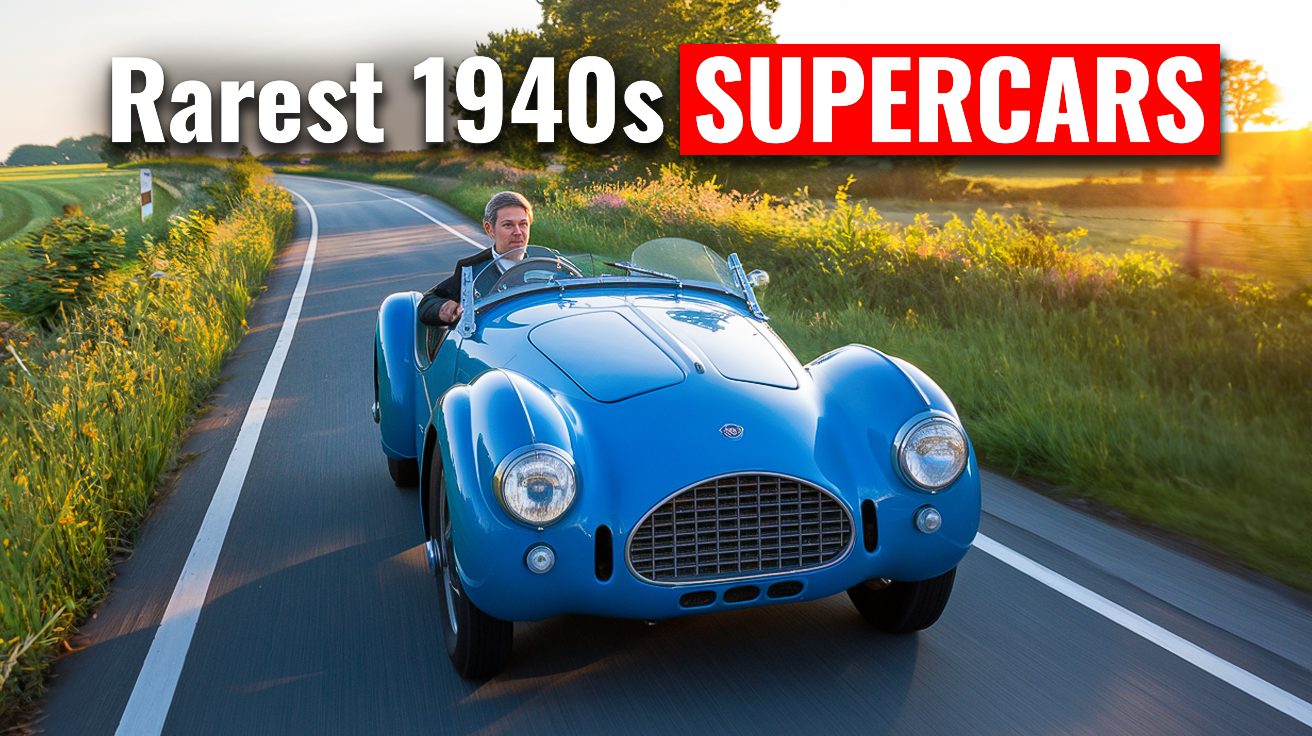Finding true automotive innovation means looking beyond familiar names to the forgotten heroes of the 1940s. While today’s collectors chase after Ferrari and Porsche, the truly revolutionary designs came from smaller companies like Talbot-Lago. Their magnificent T26 Grand Sport combined 124 mph performance with coach-built elegance at a time when most cars struggled to reach basic highway speeds. These obscure manufacturers tackled the biggest challenge of their era head-on—how to create high performance from severely limited resources through clever lightweight construction and wind-cheating aerodynamic designs.
From the Ferrari 166 S to the Bentley Mark VI, these fifteen revolutionary post-war supercars established the foundations for modern car culture.
15. 1948 Talbot-Lago T26 Grand Sport (Exterior)
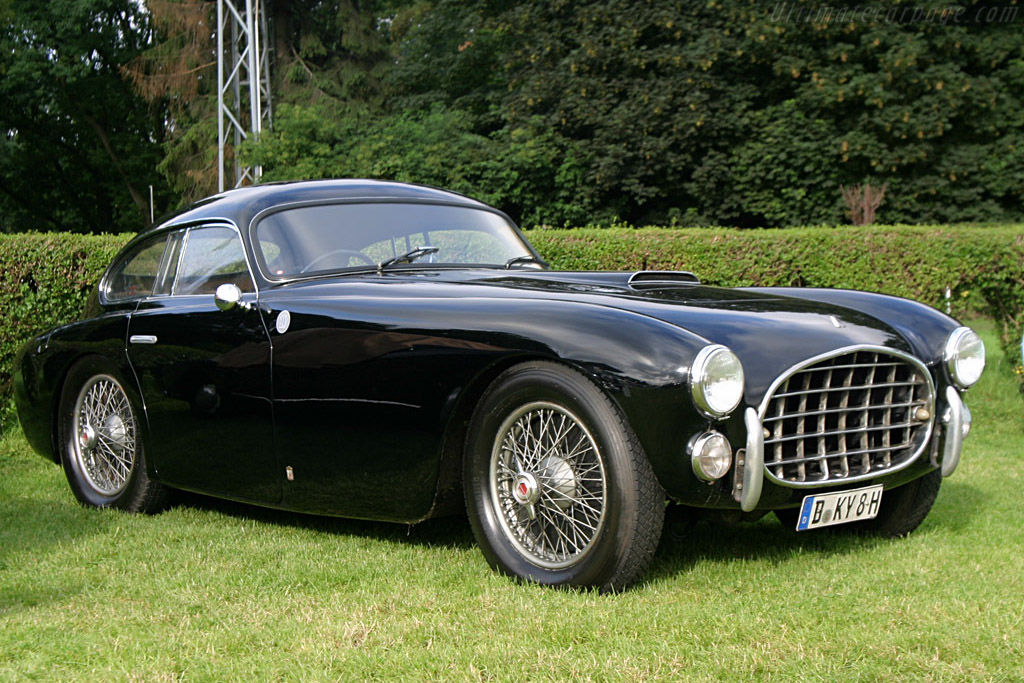
At 190 horsepower, the Talbot-Lago T26 Grand Sport stunned the post-war automotive world with its extraordinary combination of elegance and raw speed. Its 4.5L 6-cylinder engine propels it to speeds of 124 mph—remarkable for post-war vehicles. Custom coachbuilders crafted each body with flowing lines that emphasize both aerodynamics and luxury. Racing pedigree ensures responsive handling on winding roads, making it a true driver’s car despite its luxurious presence. The Grand Sport combined racing technology with road comfort, creating a vehicle that performs as beautifully as it looks.
1948 Talbot-Lago T26 Grand Sport (Interior)
![1948 Talbot-Lago [Interior]](https://www.gadgetreview.com/wp-content/uploads/1948-Talbot-Lago-Interior-1024x570.jpg)
Handcrafted details define the T26 Grand Sport’s interior, where luxury meets performance. Premium materials including rich leather upholstery and polished wood trim surround the occupants. Driver-focused gauges display essential information clearly, while comfortable seating accommodates long-distance touring. Each interior was customized to buyer specifications, making every T26 Grand Sport unique. High maintenance requirements were offset by exceptional build quality that has helped these rare cars maintain their value for collectors.
14. 1948 Tucker Torpedo (Tucker 48) (Exterior)
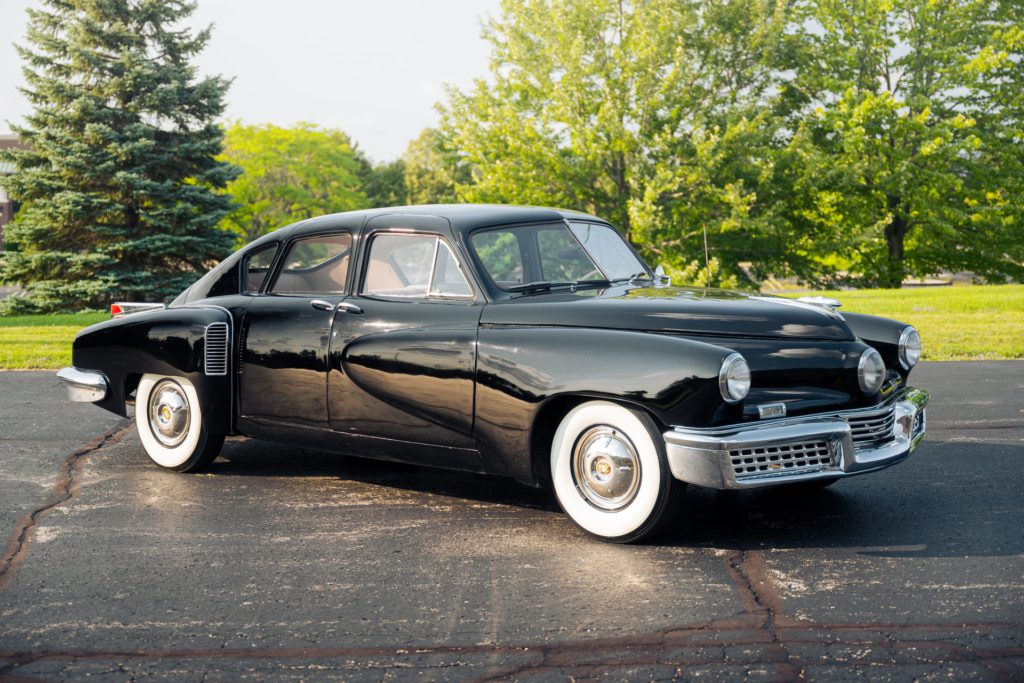
The Tucker Torpedo’s central headlight rotates with the steering wheel, illuminating corners before you reach them—just one of many innovations that made this rare machine decades ahead of its time. The rear-mounted 6-cylinder engine delivers 166 horsepower while improving weight distribution. Safety innovations include a padded dashboard and pop-out windshield that ejects during accidents. With only 51 cars built before the company collapsed, the Tucker acquired legendary status that transcends its criticized build quality and reliability issues.
1948 Tucker Torpedo (Tucker 48) (Interior)

Safety without sacrificing comfort prioritizes the Tucker 48’s cabin design. Controls are placed within easy reach on a dashboard lacking sharp edges that could cause injuries in crashes. Six passengers fit comfortably with room to stretch in the spacious interior. Excellent visibility through the windshield complements the car’s safety-focused design. What began with public curiosity evolved into recognition of Tucker’s visionary approach to automotive safety, helping these cars become among the most sought-after American classics.
13. 1947 Maserati A6 (Exterior)

If you’re drawn to vehicles where performance meets artistry, the Maserati A6 embodies Pininfarina’s genius with flowing lines draped over racing-bred engineering. Exceptional rigidity comes from the tubular steel chassis while keeping weight low. The 1.5L inline-6 engine produces 65 horsepower, delivering spirited performance despite modest output. Winding roads benefit from the independent front suspension, with direct steering feedback connecting driver to road. Just 61 units were produced, making the A6 a rare milestone in Maserati’s legacy.
1947 Maserati A6 (Interior)

Driver focus defines the A6’s cockpit, prioritizing control above all else. Seats and door panels wear premium leather that ages beautifully over decades. Navigating without power assistance requires the large-diameter steering wheel that provides necessary leverage. Vital information appears on clear, simple gauges without distraction. Unnecessary elements are absent in this minimalist approach that focuses solely on the driving experience. The perfect blend of luxury and sporting intention makes the A6 highly valued by collectors who appreciate its Pininfarina-designed exclusivity.
12. 1946 Triumph Roadster 1800 (Exterior)
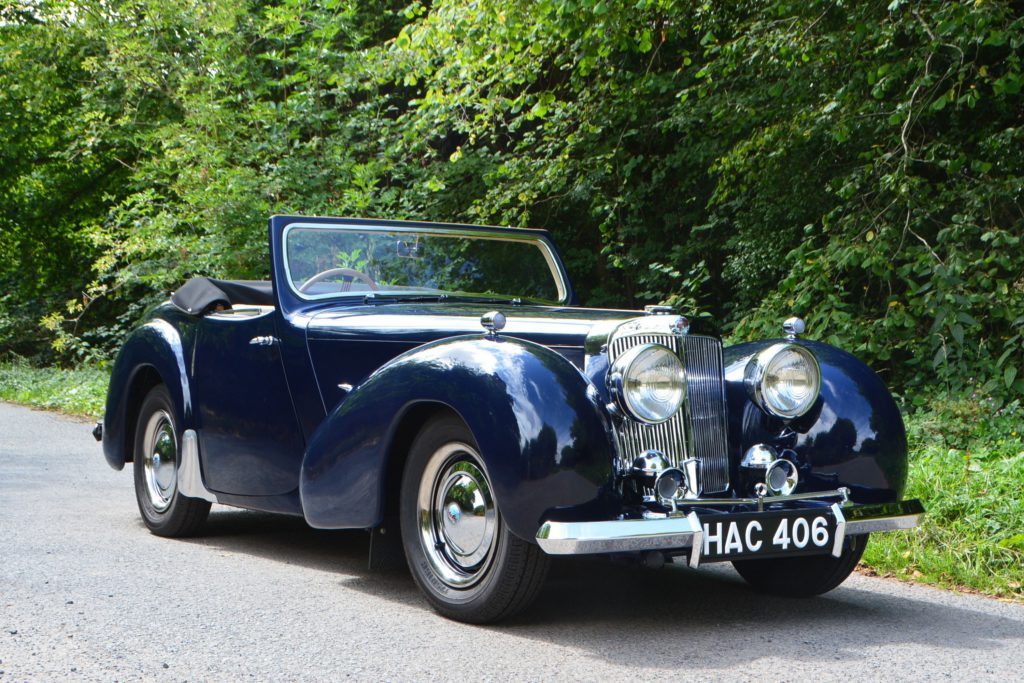
Cruising through the countryside with four companions becomes possible in the Triumph Roadster 1800, where a clever dickey seat transforms this elegant tourer into a practical people carrier. Weight reduction and increased rigidity come from aluminum body construction that also resists corrosion. The 1.8L 4-cylinder engine generates 65 horsepower, delivering adequate power for touring the countryside. Long journeys become comfortable thanks to well-tuned suspension, while the blend of pre- and post-war design elements creates a distinctive profile.
1946 Triumph Roadster 1800 (Interior)

British craftsmanship surrounds occupants in the Roadster’s cabin with practical luxury. Long-distance travel becomes pleasant with rich leather upholstery covering comfortable seats. Essential instruments sit in a logical layout on the wood dashboard. Winding roads can be navigated with the large-diameter steering wheel providing necessary leverage. Rain stays out effectively through weather protection that includes a sturdy folding top and side curtains. The Roadster maintains a niche following among collectors who value its comfort and versatility.
11. 1948 Lagonda 2.6-Litre (Exterior)
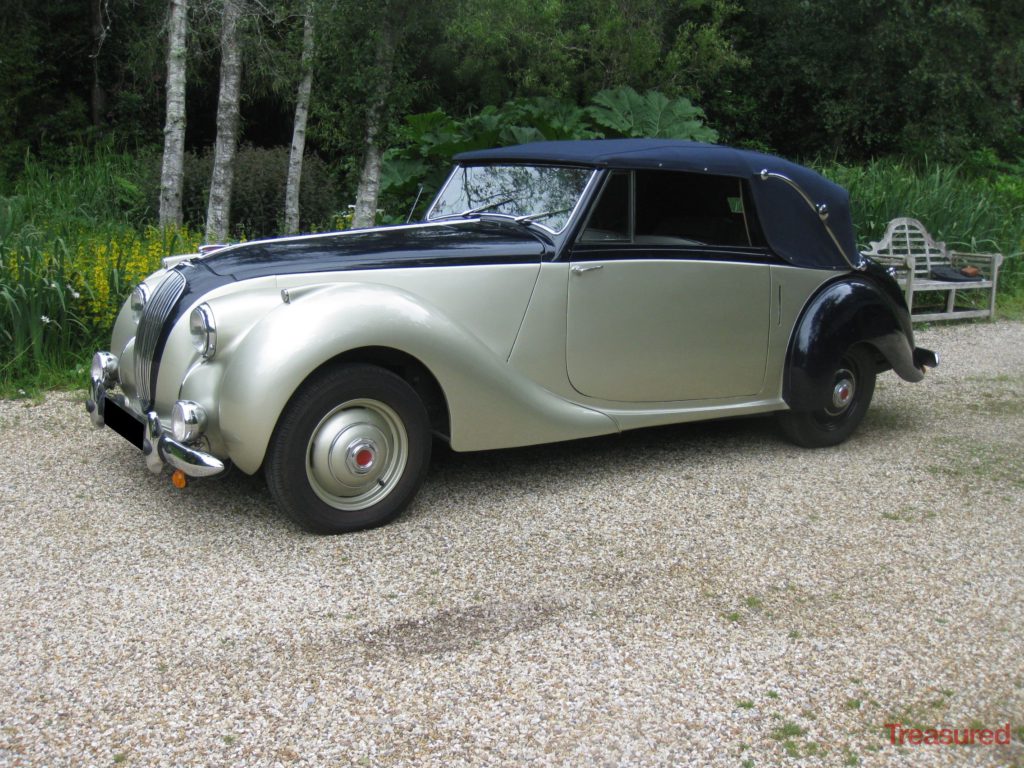
The Lagonda 2.6-Litre carries W.O. Bentley’s engineering genius wrapped in Frank Feeley’s stunning bodywork—a combination that redefined British luxury motoring after World War II. Smooth, powerful acceleration comes from the 2.6L straight-6 engine producing 105 horsepower. Luxury vehicles of this era rarely had the exceptional handling delivered by advanced independent suspension. Distinctive proportions feature a long hood and short deck in both available body styles—saloon or drophead coupe. New standards for British luxury cars were set by the Lagonda’s engineering and design while maintaining the brand’s racing heritage.
1948 Lagonda 2.6-Litre (Interior)

British luxury surrounds passengers with handcrafted details inside the Lagonda. Exceptional craftsmanship shows in polished wood veneer covering the dashboard and door caps. Both comfort and durability come from supple leather upholstery. Engine and vehicle information display clearly on a complete set of gauges facing the driver. Generous legroom and supportive seating await rear passengers. Understated elegance in the cabin reflects Lagonda’s approach to luxury without ostentation, creating a driving environment balancing comfort with sporting intention.
10. 1949 Healey Silverstone (Exterior)

Race cars often suffered compromises when adapted for road use, but the Healey Silverstone solved this with its purpose-built design featuring a lightweight aluminum body and race-ready ergonomics. Weight stays low, maximizing performance from the 2.4L Riley inline-4 engine producing 104 horsepower. High speeds benefit from reduced drag via a retractable windscreen, while cycle fenders minimize weight further. Exceptional grip through corners comes from superior suspension geometry. Direct connection to Britain’s famous racing circuit comes through the Silverstone name, highlighting its competition-focused design.
1949 Healey Silverstone (Interior)

Everything non-essential to performance is stripped away in the Silverstone’s cockpit. Aggressive cornering requires minimal seat padding to keep you firmly in place. Basic gauges on the simple dashboard present only essential information. Direct connection to the front wheels comes through a wood-rimmed steering wheel. Function dominates over luxury in this interior, with weather protection secondary to weight reduction and driver engagement. The pure driving experience makes the Silverstone a driver’s car that sacrifices comfort for the thrill of the drive.
9. 1946 Bentley Mark VI (Exterior)
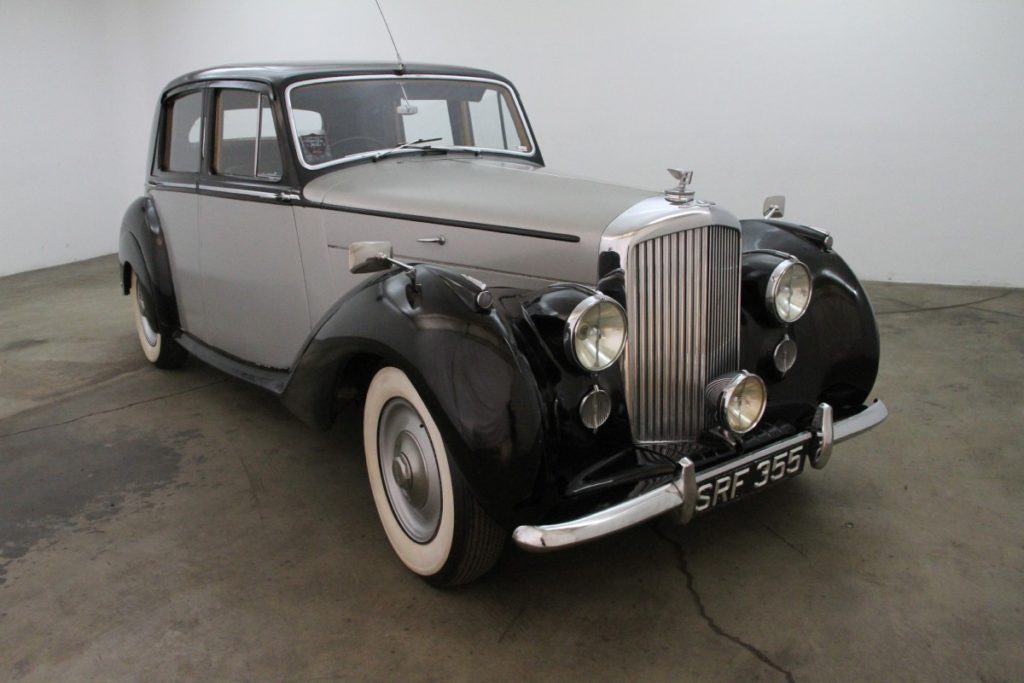
The Bentley Mark VI‘s revolutionary all-steel body brought modern durability to the luxury market while maintaining the brand’s legendary craftsmanship during challenging post-war years. Smooth, refined power suitable for a premium vehicle comes from its 4.3L inline-6 engine (later expanded to 4.6L). Ride quality improves without sacrificing handling precision thanks to independent front suspension. Prestigious heritage announces itself through the classic Bentley radiator grille visible from any angle. The transition to the modern automotive era came successfully through this model while maintaining the brand’s reputation for excellence.
1946 Bentley Mark VI (Interior)
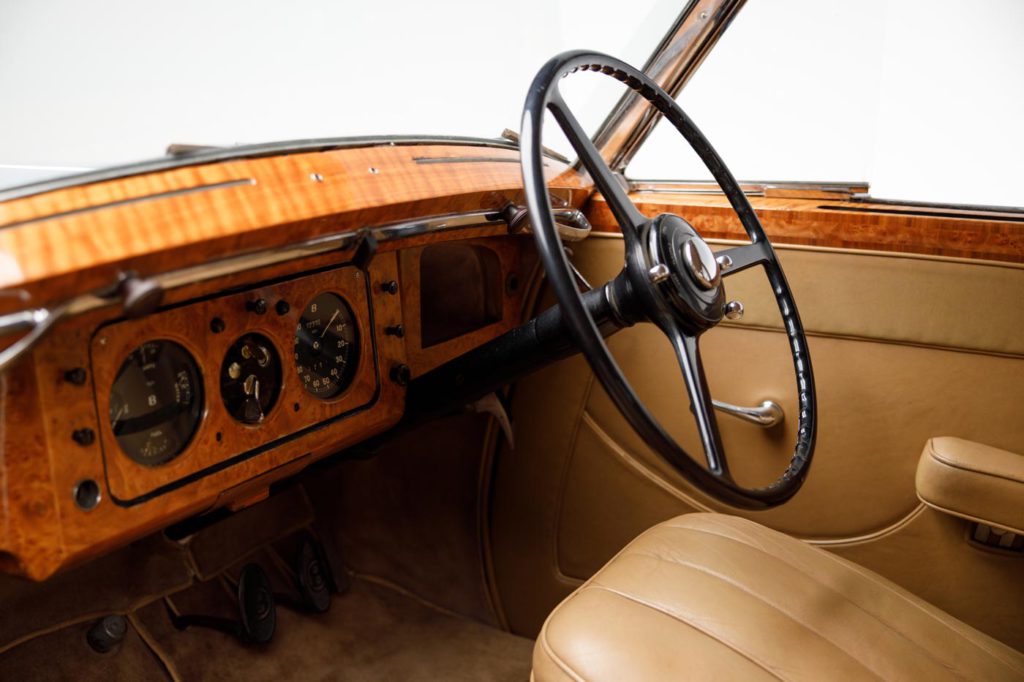
British luxury at its finest exemplifies the Mark VI cabin. Hand-selected burled walnut veneers cover the dashboard and door caps, each piece chosen for grain pattern. Age improves the premium leather upholstery, developing a patina that modern materials can’t replicate. Warmth underfoot comes from wool carpeting. Comprehensive instrumentation in polished bezels faces the driver. Limousine-like comfort with ample head and legroom awaits rear passengers. Bentley’s uncompromising commitment to craftsmanship shows in every surface, defining luxury motoring in the post-war era.
8. 1948 Ferrari 166 S (Exterior)
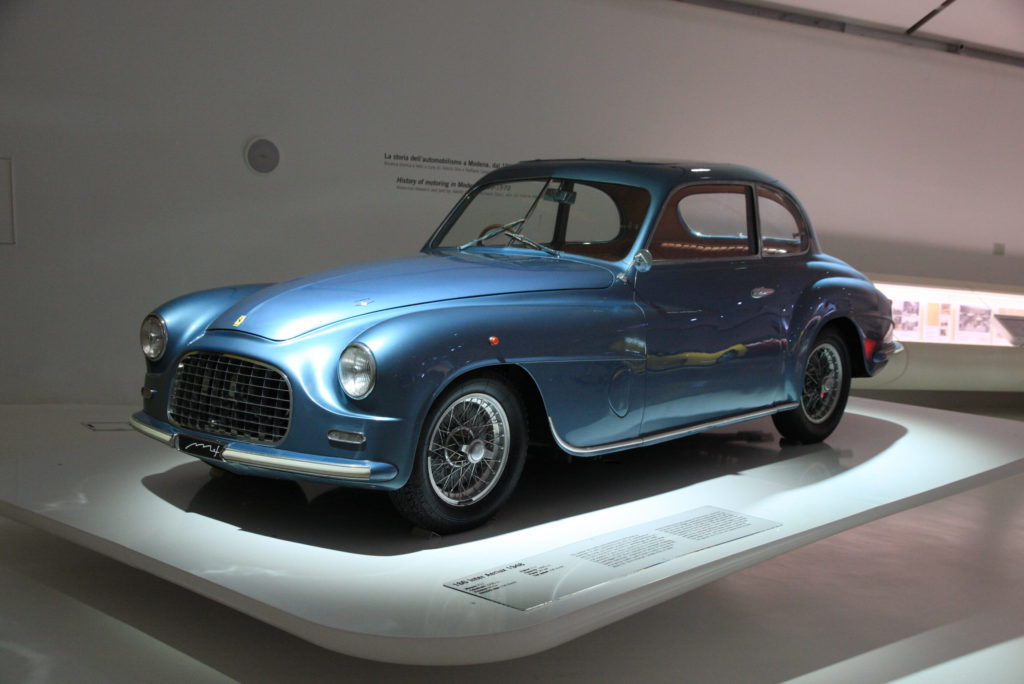
Dominating the Mille Miglia and Targa Florio, the Ferrari 166 S cemented Enzo’s racing legacy with its tiny yet mighty 2.0L V12 producing an astonishing 110 horsepower. Eager revving to redline characterizes the engine’s personality. Lightweight yet rigid structure results from the “Superleggera” construction method using tubular steel framework and thin aluminum panels. Twisting race circuits benefit from improved agility due to compact dimensions. Performance without compromise drives every aspect of the 166 S, laying the foundation for Ferrari’s legendary status.
1948 Ferrari 166 S (Interior)

Driving becomes the exclusive focus inside the 166 S. Aggressive cornering requires simple bucket seats to hold you in place. Engine speed takes precedence over velocity, emphasized by the centrally positioned large tachometer. Mechanical symphony from the V12 fills the cabin thanks to minimal sound insulation. Every road nuance transmits directly to your hands through the thin-rimmed steering wheel. Distractions disappear in this spartan approach, connecting driver and machine in the purest form. Ferrari’s racing priority shows from the beginning in the 166 S interior, setting the template for decades of sports cars.
7. 1946 Allard K1 (Exterior)

When Sydney Allard needed both street and track performance from the same chassis, he created the K1—marrying lightweight British design with Ford V8 muscle for versatility unmatched by specialist competitors. Mass reduction where it matters most comes from lightweight aluminum body panels. Ample torque throughout the rev range flows from the 3.6L Ford V8 engine delivering 85 horsepower. Precise handling even on rough surfaces results from independent front suspension—advanced for its time. Immediate recognition among post-war performance cars comes from the distinctive front-end styling.
1946 Allard K1 (Interior)

Functional simplicity with British sports car character defines the K1’s cockpit. Essential information appears on basic instrumentation for the driver. Adequate support without unnecessary weight comes from simple seats. Managing the powerful engine requires leverage provided by the large-diameter steering wheel. Minimal but effective weather protection is available when needed. Sydney Allard’s racing focus and pragmatic engineering philosophy show in this no-nonsense approach to interior design, creating a car prioritizing the driving experience above all else.
6. 1948 Porsche 356 (Exterior)

The Porsche 356 launched a design language so perfect that its DNA still appears in today’s models, despite squeezing just 35 horsepower from its modest air-cooled engine. Performance maximizes from the 1.1L flat-4 engine thanks to the lightweight aluminum body. Unique handling characteristics and excellent traction come from the rear-engine layout. Surprising speed from limited power results from the aerodynamic shape minimizing drag. Functional purposes are served by every curve while maintaining aesthetic appeal. Decades of sports car design were influenced by this groundbreaking approach, defining Porsche’s performance philosophy through intelligent engineering.
1948 Porsche 356 (Interior)
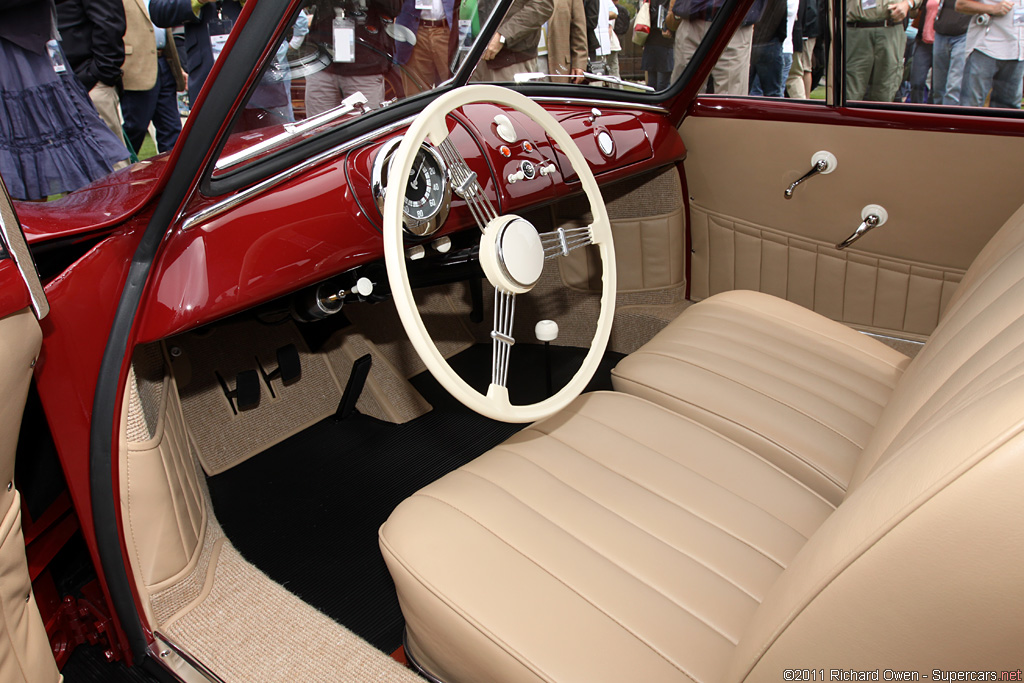
Simple, functional space focused entirely on driving fills the 356 interior. Unnecessary distractions and weight disappear in the spartan cabin. Essential information appears clearly and directly on basic gauges. Excellent visibility for precisely placing the car on the road comes from the upright seating position. Spirited driving requires secure seating, provided by simple bucket seats. Precise control ultimately comes from the floor-hinged pedals despite requiring adaptation. Porsche’s driver-focused interior philosophy was established by this minimalist approach, defining the brand for generations.
5. 1946 Alfa Romeo 6C 2500 (Exterior)

If you value the marriage of technical sophistication and artistic coachwork, the Alfa Romeo 6C 2500 represents the pinnacle of pre-war Italian design philosophy carried into the post-war era. Smooth power throughout the rev range flows from the 2.5L straight-6 engine producing 90 horsepower. Bodies ranging from elegant to sporty were created by various coachbuilders, including Pinin Farina. Handling precision unusual for luxury cars of this era comes from independent front suspension. Superior stopping power compared to many contemporaries results from hydraulic brakes.
1946 Alfa Romeo 6C 2500 (Interior)

Sporting character blends equally with luxury in the 6C 2500’s interior. Every surface wears premium materials, from leather seating to wool headlining. Clear, legible gauges housed in a polished instrument panel face the driver. Generous legroom accompanies comfortable seating for passengers. Warmth enters the cabin environment through wood trim accents. Comfort for touring balances with control for spirited driving in the driving position. Versatility for both grand touring and everyday use comes from this dual-purpose approach while maintaining Alfa Romeo’s sporting heritage.
4. 1948 Aston Martin DB1 (Exterior)
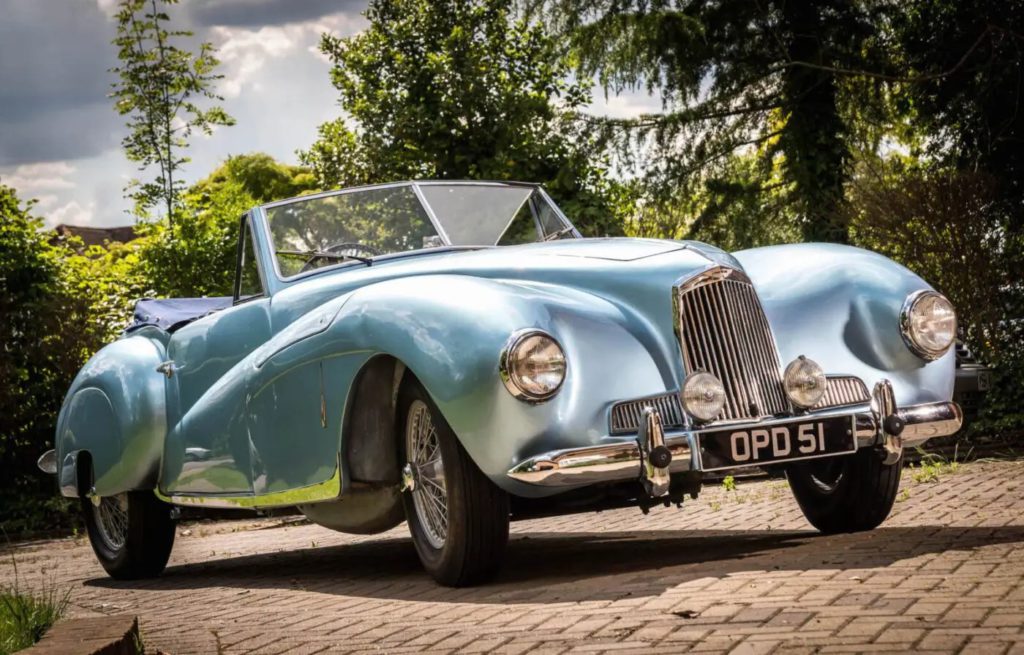
The Aston Martin DB1 introduced the iconic three-part grille that would define the brand for generations, marking David Brown’s ambitious revival of the storied British marque. Responsive throttle control accompanies the 2.0L 4-cylinder engine delivering 90 horsepower. Flowing lines that look fast even when stationary define Frank Feeley’s aerodynamic body design. Clean lines remain uncompromised thanks to a clever compartment discreetly storing the spare wheel. Aston Martin’s post-war renaissance foundation was laid by this limited-production model.
1948 Aston Martin DB1 (Interior)

British luxury touches accompany a driver-focused environment inside the DB1. Long-distance travel becomes comfortable with premium leather covering well-designed seats. Excellent feedback from the front wheels transmits through the large wood-rimmed steering wheel. Essential information appears without unnecessary complications on clear gauges. Perfect balance between sporting intent and grand touring comfort strikes the cabin’s overall design. Decades of Aston Martin interiors would follow this approach, establishing the brand’s reputation for combining performance with luxury.
3. 1948 Jaguar XK120 (Exterior)

Post-war Britain desperately needed export success, and the Jaguar XK120 delivered with its record-breaking 120 mph top speed that astonished international markets while establishing British performance credentials. Its powerful 3.4L inline-6 engine producing 160 horsepower provided breathtaking acceleration. Handling enhances thanks to the lightweight aluminum body’s low mass. Precise control through curves and over rough surfaces results from independent front suspension. Decades of sports car design were influenced by its stunning proportions. Timeless beauty that still turns heads today comes from the flowing fenders and long hood – retro car features that will always make this Jaguar a classic.
1948 Jaguar XK120 (Interior)
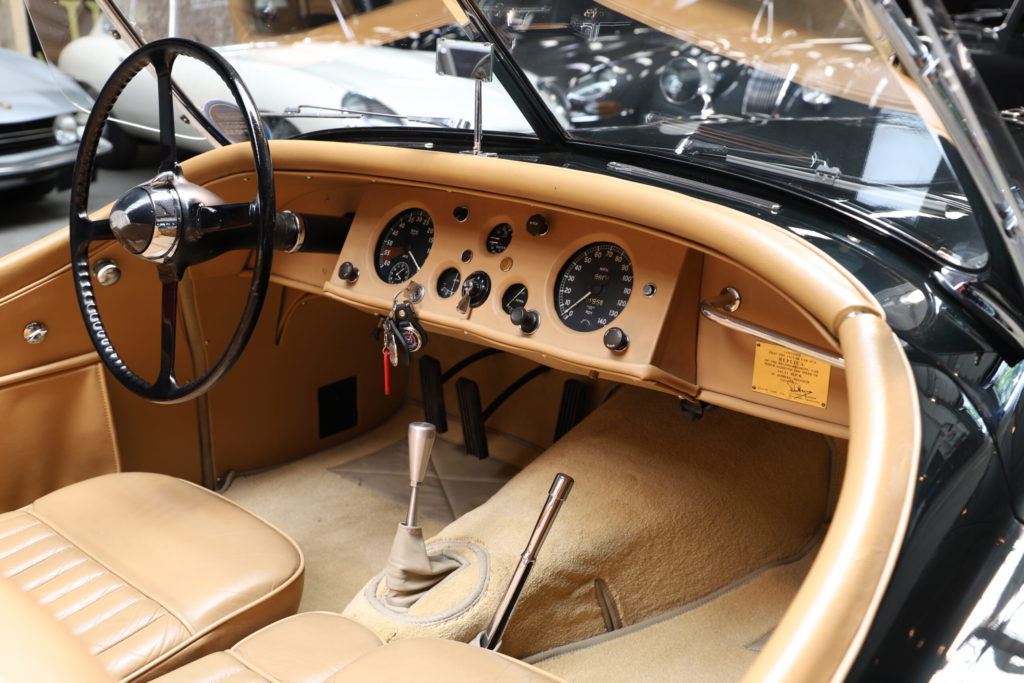
Sporting character balances with typical British luxury in the XK120’s cabin. Support during spirited driving while remaining comfortable for long journeys comes from leather-covered seats. Essential gauges in clear view of the driver sit housed in a wood dashboard. Precise control without power assistance offers the large-diameter steering wheel. Controls stay within easy reach thanks to the cabin’s relatively narrow width. Weather protection includes a sturdy convertible top and removable side screens. Weekend toy and daily transportation roles both suit the XK120 thanks to this practical approach to luxury without compromising sporting credentials.
2. 1948 Bristol 401 (Exterior)

When aircraft engineers turned their attention to automobiles, the Bristol 401 emerged with aerodynamic principles applied to a road car, creating exceptional high-speed stability unusual for vehicles of its era. Smooth power delivery characterizes the 2.0L straight-6 engine—derived from BMW designs—producing 85 horsepower. Outstanding handling and efficiency came from the Bristol Aeroplane Company applying its engineering knowledge. Reduced drag results from the distinctive front end housing headlights between the grille and fenders. Thoroughly modern for its era describes this approach to design.
1948 Bristol 401 (Interior)

Control and visibility emphasize the driver-focused environment inside the 401. Excellent sightlines in all directions come from the well-designed seating position. Essential information appears clearly without unnecessary complications on instruments. All touch points wear premium materials, from the steering wheel to door panels. Attention to detail and quality demonstrate Bristol’s commitment throughout the cabin. Engineering-led philosophy and the company’s aviation heritage reflect in this no-nonsense approach to interior design, creating a driving experience prioritizing control and precision.
1. 1946 Cisitalia 202 (Exterior)
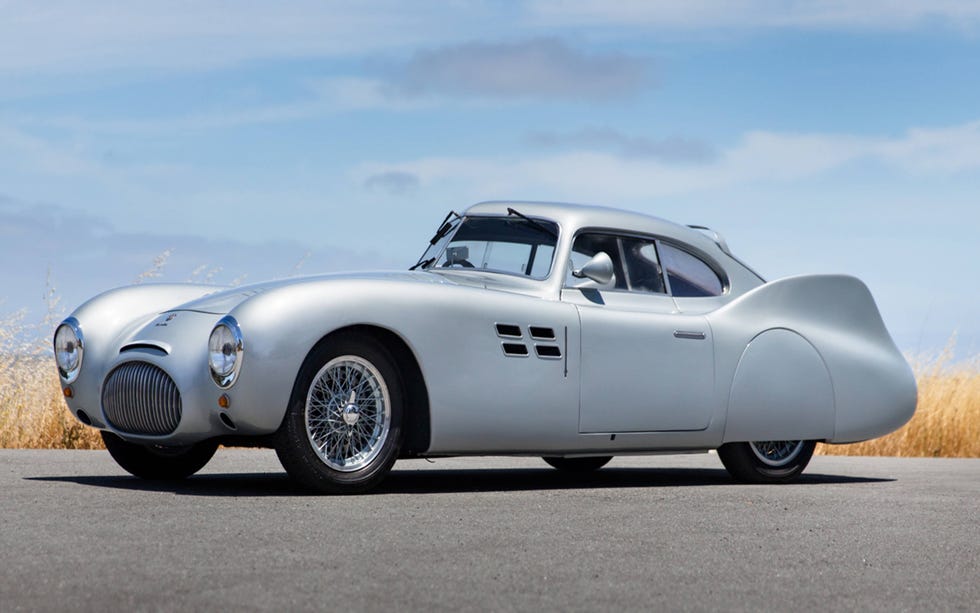
The Cisitalia 202 sits in New York’s Museum of Modern Art as the only production car deemed worthy of permanent collection status—recognition of Pinin Farina’s revolutionary seamless body design. Structural integrity while maintaining low weight results from the tubular frame and aluminum body. Adequate power for the lightweight chassis comes from the 1.1L Fiat engine producing 55 horsepower. The moment automotive design became art is represented by this car, influencing vehicle styling for decades.
1946 Cisitalia 202 (Interior)
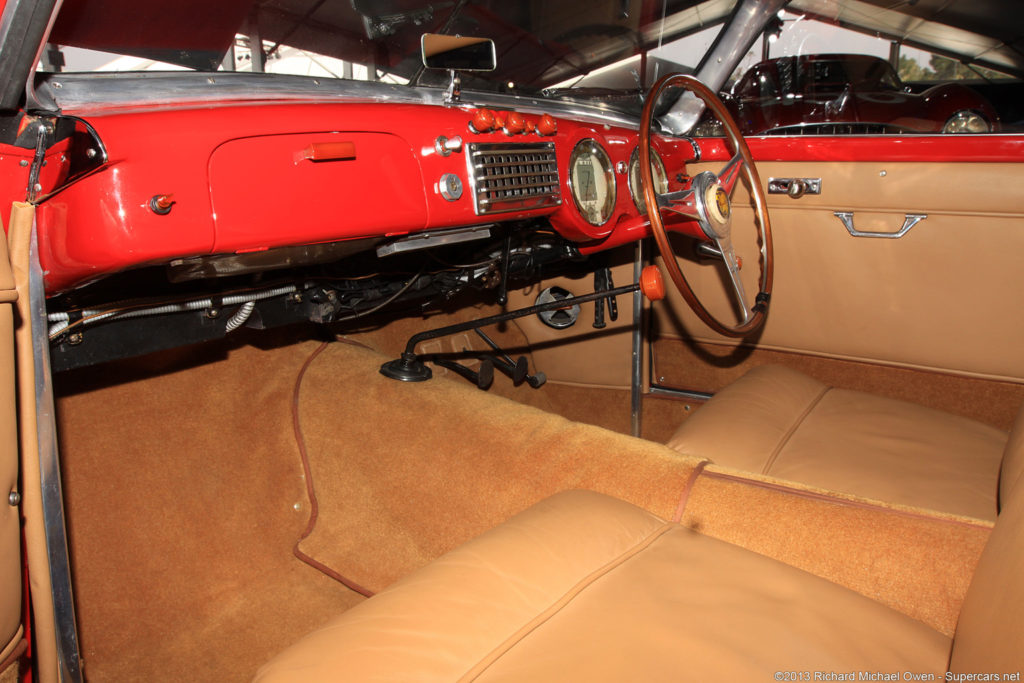
Exterior minimalist beauty continues inside the 202’s cabin with clean, simple lines. Essential information without distraction comes from basic instrumentation. Perfect relation to controls and pedals results from the carefully designed seating position. Direct connection to the front wheels comes with minimal assistance through the thin-rimmed steering wheel. Equal importance for both function and form appears in every element. Significance beyond performance capabilities comes from this holistic approach to design, creating a driving experience that’s as beautiful as it is engaging.

